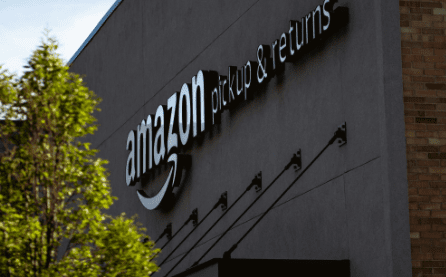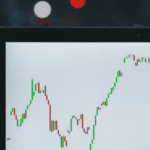Amazon is changing its game plan. Instead of focusing just on gadgets, tech, or premium goods, the company is now targeting everyday items like toothpaste, detergent, and other basic products. Why? Amazon wants to win over shoppers who are going for super-cheap deals on Chinese platforms like Shein and Temu. These companies are making it big by offering low-priced, trendy products and quick delivery, which is attracting younger shoppers, especially in the United States.
But there’s a catch: selling more basic items could lead to a drop in the average selling price (ASP) of Amazon’s products. This could mean lower profits per item. However, Amazon believes it can make up for this by getting people to buy more frequently and in larger quantities, building customer loyalty. Amazon’s Chief Financial Officer, Brian Olsavsky, highlighted that customers now rely on Amazon for more of their everyday needs, which he sees as a positive trend.

Let’s dive into the details of Amazon’s strategy, why they’re doing it, and what challenges they could face along the way.
Why Amazon is Pushing Basics: Amazon is facing tough competition from Chinese retail giants Shein and Temu. Shein is well-known for its super low-cost fashion, while Temu offers affordable home décor and beauty products. Both companies have grown quickly, thanks to cheap prices and efficient shipping. They’ve even started expanding into categories Amazon dominates, like essentials and beauty products. So, Amazon needed to act fast.
To compete, Amazon has started cutting prices, particularly for items under $20, so it can match the affordability that Shein and Temu offer. The goal? Attract more budget-conscious shoppers who might otherwise head to these Chinese platforms.
How Amazon Plans to Compete:
- Offering More Essentials: By stocking everyday items like toothpaste, detergent, and snacks, Amazon hopes to capture a bigger share of its customers’ daily spending. Essentials may be low-cost, but people need them regularly, meaning they’re likely to come back for more. This increases Amazon’s overall sales volume and helps it stay in customers’ daily routines.
- Leveraging Logistics: Amazon has one of the best logistics networks globally, which it plans to use to stay ahead. Quick and efficient delivery is a key advantage that helps Amazon keep up with fast-shipping rivals. It continues to invest in technology to make its delivery process even smoother and faster, which is important as shoppers expect their items almost immediately.
- Reduced Seller Fees: Amazon is also making it easier for sellers to compete with low-priced items by reducing fees for clothing under $20. This price cut is meant to help sellers offer competitive prices on essentials and attract more cost-conscious shoppers who may already be fans of Shein or Temu.
The Benefits of Amazon’s New Strategy:
- Higher Shopping Frequency: When Amazon offers essential items, customers are likely to shop more often. They might even make Amazon their go-to place for both household basics and high-tech gadgets.
- Larger Shopping Carts: According to Amazon, customers who come for basic items tend to buy additional products, often adding things they didn’t initially plan on buying. This “bigger basket” trend helps Amazon boost overall sales, even if individual item prices are lower.
- Increased Customer Loyalty: By covering a wider range of products, Amazon can meet more of its customers’ needs, making it harder for competitors to draw them away. If customers trust Amazon for everyday essentials, they may become more loyal, leading to long-term gains.
The Challenges of Going Low-Price: However, Amazon’s shift to focus on everyday items isn’t without risks. Here are a few of the challenges Amazon may face:
- Lower Profit Margins: Selling cheaper products can hurt profit margins. Electronics and high-tech items bring in much more money per sale than essentials like detergent or toothpaste. So, while essentials increase sales volume, Amazon may make less profit per item.
- Brand Image Risks: Amazon has built its brand around convenience, quality, and a broad selection. Becoming too focused on cheaper items might affect how people view Amazon, making it seem more like a bargain store than a premium online retailer.
- Competition Isn’t Going Away: Shein and Temu aren’t likely to slow down. Both companies are constantly improving their prices and delivery speeds, posing an ongoing challenge. Shein, in particular, has been a hit in the U.S. market, and as they branch into more categories like essentials, they could continue taking market share from Amazon.
- Balancing Everyday Items with Premium Goods: Amazon still needs to maintain a balance between its low-price products and high-margin items, like electronics and premium tech goods. Focusing too much on essentials could make it difficult to sustain its image as a one-stop-shop for everything, from basic needs to luxury items.
How Amazon is Adapting: Amazon’s plan isn’t just about stocking everyday items; it’s about using its strengths to outdo the competition. Here’s how:
- Tech Investments: Amazon continues investing in advanced technology to streamline its logistics and customer service, ensuring deliveries are fast and reliable.
- Focus on Customer Experience: Amazon is determined to keep its reputation for reliability and convenience. By improving every step of the shopping experience, from browsing to delivery, Amazon aims to make customers happy and keep them coming back.
- Data-Driven Approach: Amazon uses customer data to understand shopping patterns. By analyzing what people are buying, how often, and in what combinations, Amazon can tailor its offerings to meet demand and increase sales.
Amazon’s shift toward everyday essentials shows how seriously it’s taking the competition from Shein and Temu. While the strategy does come with risks, it also opens up new opportunities for Amazon to increase customer loyalty and maintain a strong market position. The challenge now is for Amazon to balance this new focus on low-cost items with its traditional high-margin products.

As competition heats up, Amazon is betting that its logistics, technology, and massive product range will help it stay on top. By diversifying its offerings and improving the customer experience, Amazon aims to hold its ground against China’s fast-fashion and low-cost retail giants. Will this new focus pay off, or could it backfire and dilute Amazon’s brand image? Only time will tell.


